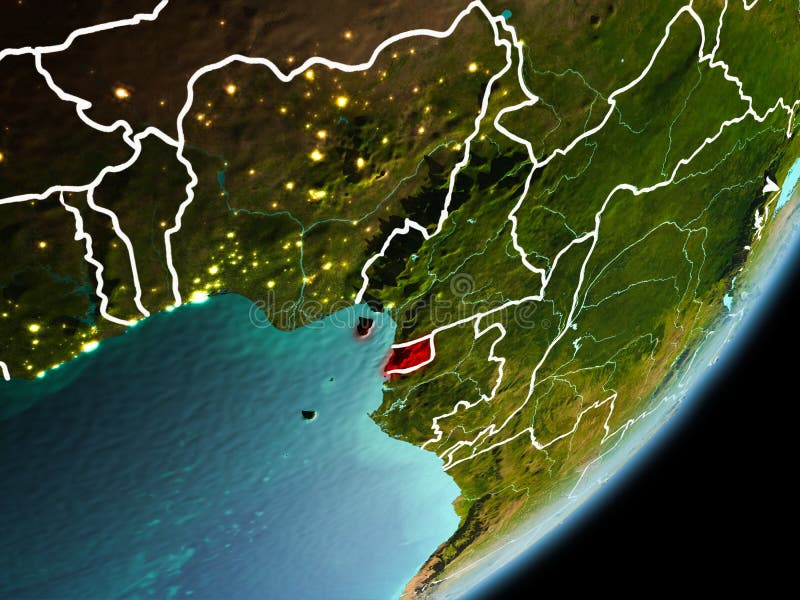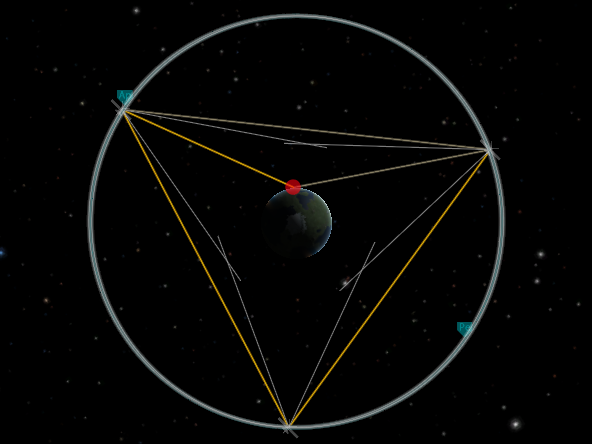- Equatorial Orbit Meaning
- Equatorial Orbit
- Equatorial Orbit Has An Inclination Of
- Satellite Orbits Explained
- Equatorial Orbital Plane
- Equatorial Orbit Launch
- Types Of Satellite Orbits
The first satellite failure due to total dose was the Telstar. Telstar was launched a day after the July 9, 1962 Starfish nuclear test. The Starfish, a nuclear weapon of 1.4 Megaton strength, was detonated at an altitude of about 248 mi (~400 km) above Johnston Island in the Pacific Ocean. The explosion produced beta particles (electrons) that were injected into the earth's magnetic field and which formed an artificial radiation belt. This artificial electron belt lasted until the early 1970s. The Telstar experienced a total dose 100 times that expected due to the weapon test. Starfish destroyed seven satellites within 7 months primarily from solar cell damage.

The total ionizing dose (TID), mostly due to electrons and protons, can result in device failure (or biological damage to astronauts). In either case, TID can be measured in terms of the absorbed dose Adobe premiere effects pack free. , which is a measure of the energy absorbed by matter. Absorbed dose is quantified using either a unit called the rad (an acronym for radiation absorbed dose) or the SI unit which is the gray (Gy); 1 Gy = 100 rads = 1 J/kg.
Equatorial Orbit Meaning
- Equatorial orbit was a orbit achieved above the equator of a planetary body that had an orbital inclination of 0 °.
- 1 a: of, relating to, or located at the equator or an equator also: being in the plane of the equator a satellite in equatorial orbit. B: of, originating in, or suggesting the region around the geographic equator.
Equatorial orbit nailed An inclination of exactly 180° is a retrograde equatorial orbit. The martian moons, Phobos and Deimos, they're both in equatorial orbits. It follows an almost-circular close-to-equatorial orbit around the parent asteroid. Kerbisynchronous equatorial orbit (KEO) → Main article: KEO. Xdcam hd422 codec download mac. The stationary orbit around Kerbin, where the orbiting craft appears to stand still at a point above Kerbin's equator. The name was chosen to abbreviate it similar to GEO the abbreviation for geostationary orbit, which is the real world equivalent on the Earth. A geostationary equatorial orbit (GEO) is a circular geosynchronous orbit in the plane of the Earth's equator with a radius of approximately 42,164 km (measured from the center of the Earth). 'Flawless' launch of UAE's Al Yah 3 satellite as rocket blasts off to space.
Ionizing Radiation Environment in Space
[Source: Space Environments and Effects Program at NASA's Marshall Space Flight Center]
The TID is calculated from the trapped protons and electrons, secondary Bremsstrahlung photons, and solar flare protons (the contribution from galactic cosmic ray ions is negligible in the presence of these other sources). The main sources of the protons and electrons are from
- solar energetic particle events (from solar flares), and
- passage through the South Atlantic Anomaly.
In low earth orbit (LEO), the main dose source is from electrons and protons (inner belt); and in geostationary earth orbit (GEO), the primary source is from electrons (outer belt) and solar protons. The figure above depicts the ionizing radiation environment in space. The graph below shows the annual dose from protons, electrons and bremsstrahlung as a function of equatorial orbit altitude.
[Source: E.J. Daly, A. Hilgers, G. Drolshagen, and H.D.R. Evans, 'Space Environment Analysis: Experience and Trends,' ESA 1996 Symposium on Environment Modelling for Space-based Applications, Sept. 18-20, 1996, ESTEC, Noordwijk, The Netherlands]
The total accumulated dose depends on orbit altitude, orientation, and time. To compute TID we need to know the integrated particle energy spectrum, (E), that is, fluence as a function of particle energy. Satellites and space probes typically encounter TID between 10 and 100 krad(Si). How to stop frozen app on mac. Devices can be tested before use in laboratory facilities. In LEO, single event effects (SEE) are more of a problem although in 1991 bipolar devices were found to degrade worse from lower doses (< 0.1 rad/sec) in space than the higher values (e.g., 50-300 rad/sec) used for laboratory tests. Many bipolar devices, most notably lateral PNP transistors, exhibit this enhanced low dose rate sensitivity (ELDRS).
As TID increases, materials degradation increases, for example, solar cell output will decrease. Long-term exposure can cause device threshold shifts, increased device leakage and power consumption, timing changes, and decreased functionality. TID effects may be mitigated using radiation hardened devices and shielding. Electrons and low energy protons can be partially mitigated with shielding.
Equatorial Orbit
[Source: 'Space Radiation Effects on Microelectronics,' NASA Jet Propulsion Laboratory]

In semiconductors, the ionization excites carriers from the conduction to valence band. The ionizing radiation (damage) primarily affects gate and field oxide layer, SiO2. Ionization produces electron-hole pairs (ehps) at a rate of 8.1x1012 ehps/rad(SiO2)cm3. The electrons produced have high mobility and are quickly swept away, but the holes have much lower mobility. Some fraction (~1/5) of holes are transported to and trapped at Si/SiO2 interface. Trapped charge, in the oxide and at interface regions, changes the threshold voltage and mobility of the gate and field-oxide transistors, thereby modifying their characteristics. Trapped holes are not stable, they gradually anneal with time (hours to years). The overall effect depends on bias conditions and device technology; a typical effect is a threshold shift in MOS (metal oxide semiconductor) transistors as seen below.
[Source: The NASA ASIC Guide: Assuring ASICS for Space]
TID vs. SEE
Since both TID and SEE (single event effects) are from ionizing radiation, it is important to address the difference between the two with respect to design and analysis. TID is a long-term failure mechanism versus SEE which is an instantaneous failure mechanism. As an analogy using automobile tire failure: TID would be similar to the tread lifetime of the tire, whereas SEE would be failure due to a nail puncture. Therefore, TID failure rate can be described by a mean time to failure (MTTF), but SEE must be expressed in terms of a random failure rate.
Displacement Damage
Equatorial Orbit Has An Inclination Of
Satellite Orbits Explained
Displacement damage (DD) is the result of nuclear interactions, typically scattering, which cause lattice defects. Displacement damage is due cumulative long-term non-ionizing damage from protons, electrons and neutrons. The collision between an incoming particle and a lattice atom subsequently displaces the atom from its original lattice position as shown below.
Displacement Damage
As shown below, a cascade of collisions occurs to a portion of the semiconductor (e.g., Si) lattice atoms. These collisions are produced by both incident “heavy” particles (p, n, ions) and secondary particles. Defects (vacancies, interstitial, Frenkel pair, dislocation) are produced along the tracks of secondary particles and in clusters at the end of these tracks.
Equatorial Orbital Plane
Displacement Cascade Damage in Silicon
[Source: 'Space Radiation Effects on Microelectronics,' NASA Jet Propulsion Laboratory]
The particles producing displacement damage include protons of all energies, electrons with energies above 150 keV, and neutrons (e.g., from on-board power sources). Shielding has some effect, but it depends on location of the device (e.g., solar cells). Displacement damage is typically of lesser concern than single event effects or TID, although protons cause displacement damage in solar cells and bipolar devices. Displacement damage degrades minority carrier lifetime; a typical effect would be degradation of gain and leakage current in bipolar transistors.
Equatorial Orbit Launch
Last updated: February 13, 2007Types Of Satellite Orbits
Back to Dr. Holbert's EEE598 CourseSend comments to
